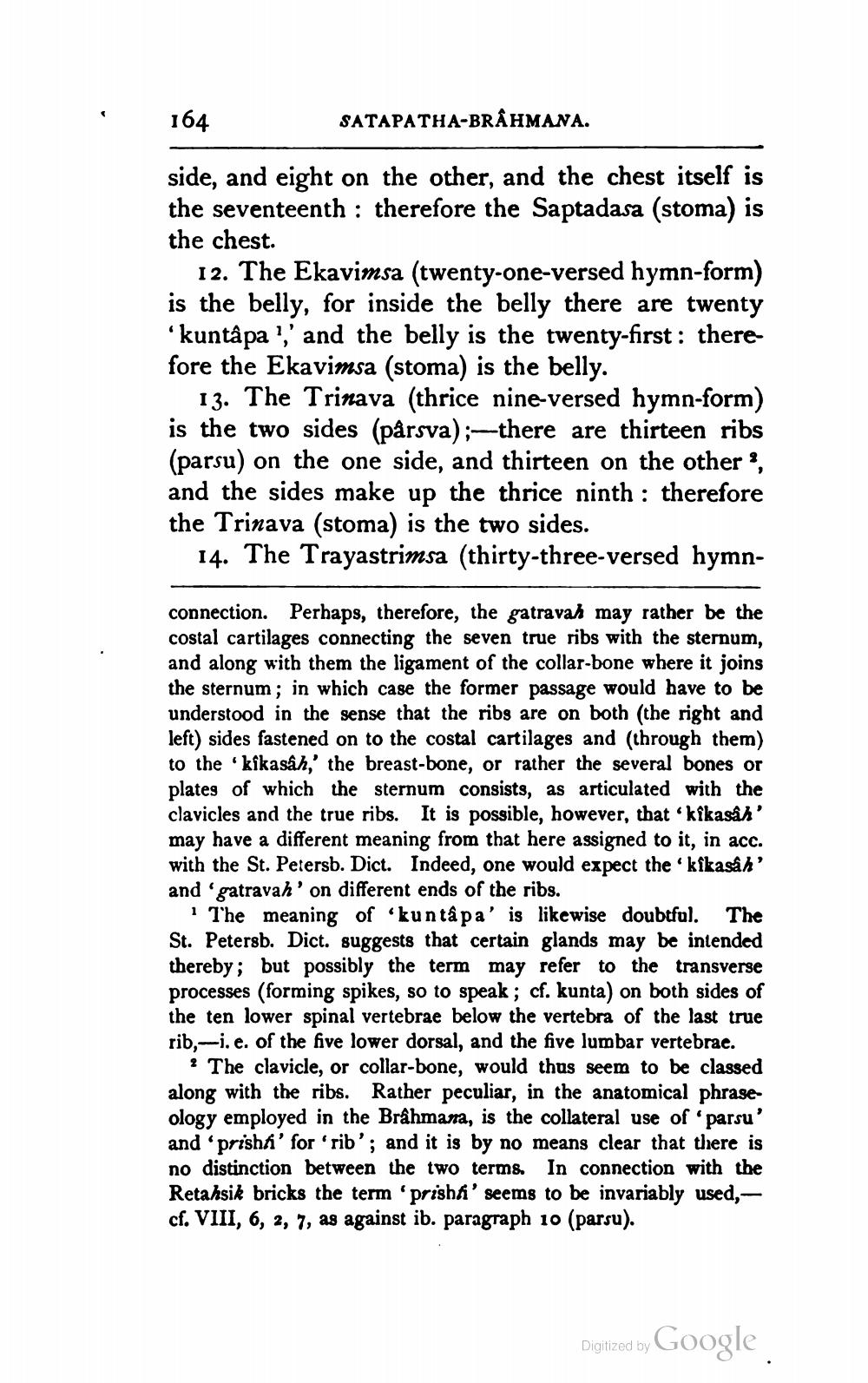________________
164
SATAPATHA-BRAHMANA.
side, and eight on the other, and the chest itself is the seventeenth : therefore the Saptadasa (stoma) is the chest.
12. The Ekavimsa (twenty-one-versed hymn-form) is the belly, for inside the belly there are twenty kuntâpa ",' and the belly is the twenty-first: therefore the Ekavimsa (stoma) is the belly.
13. The Trinava (thrice nine-versed hymn-form) is the two sides (pårsva);---there are thirteen ribs (parsu) on the one side, and thirteen on the other, and the sides make up the thrice ninth : therefore the Trinava (stoma) is the two sides.
14. The Trayastrimsa (thirty-three-versed hymn
connection. Perhaps, therefore, the gatravah may rather be the costal cartilages connecting the seven true ribs with the sternum, and along with them the ligament of the collar-bone where it joins the sternum; in which case the former passage would have to be understood in the sense that the ribs are on both (the right and left) sides fastened on to the costal cartilages and through them) to the kikasáh,' the breast-bone, or rather the several bones or plates of which the sternum consists, as articulated with the clavicles and the true ribs. It is possible, however, that kikasår' may have a different meaning from that here assigned to it, in acc. with the St. Petersb. Dict. Indeed, one would expect the "kikasan' and 'gatravah' on different ends of the ribs.
The meaning of 'kuntapa' is likewise doubtful. The St. Petersb. Dict. suggests that certain glands may be intended thereby; but possibly the term may refer to the transverse processes (forming spikes, so to speak; cf. kunta) on both sides of the ten lower spinal vertebrae below the vertebra of the last true rib, --i. e. of the five lower dorsal, and the five lumbar vertebrae.
? The clavicle, or collar-bone, would thus seem to be classed along with the ribs. Rather peculiar, in the anatomical phraseology employed in the Brâhmana, is the collateral use of 'parsu' and 'prisha' for 'rib'; and it is by no means clear that there is no distinction between the two terms. In connection with the Retahsik bricks the term 'prishti' seems to be invariably used, - cf. VIII, 6, 2, 7, as against ib. paragraph 10 (parsu).
Digitized by Google




